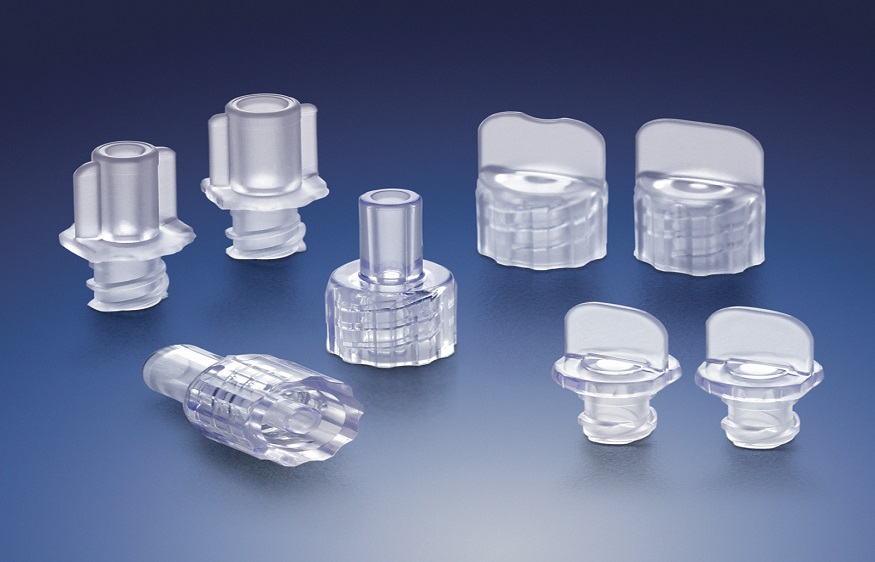When we think of a hospital room, it is inevitable to imagine the bed with the patient with many tubes and connections through which food, medication, serum, etc., are administered. These delivery devices so common in hospitals are essential and save lives every day. However, a minor mistake in your connectors can have devastating consequences. The ISO 80369 standard was born to provide security and reduce risk.
In the case of neuraxial applications, there have historically been connection errors due to confusion between, for example, the intravenous route and the intrathecal route. For this reason, the new ISO 80369 has a section dedicated to this application. Scott Colburn, director of the FDA Center for Devices and Radiological Health (CDRH) Standards Program, explained that:

Specifies the requirements for connectors used in neuraxial applications intended to deliver medications to neuraxial sites, wound infiltration, administration of anaesthesia, other regional anaesthesia procedures, and monitoring or withdrawal of cerebrospinal fluid for therapeutic or diagnostic purposes. Using the standard will thus reduce the risk of the wrong product being administered, which could save lives.”
THE RISKS OF A CONNECTION ERROR IN NEURAXIAL APPLICATIONS
The standard small diameter connector in the field of medical devices has been the Luer connector for many years, which has always proven to be effective and reliable. Precisely for that reason, it has been used in different device applications, such as vascular, enteral, respiratory, epidural, and intrathecal.
For this reason, devices not designed to be connected, in some circumstances, allow the administration of liquids and gases by the wrong route.
The consequences of a connection error between two tubes that are used to supply different fluids can be fatal, causing severe and permanent neurological damage or even death. To understand the scope of these possible connection errors, we show some of the infiltrations that, until now, have been carried out using the same connectors:
- Intravenous vincristine injections to stop cancer cells from growing
- Intrathecal injections of antibiotics, analgesics, anaesthetics, and chemotherapy drugs such as methotrexate for leukaemia and brain tumours.
- Intravenous and intrathecal injections are performed simultaneously.
- The intravenous medication was injected intrathecally.
In fact, in 2007, the WHO already warned of these risks:
“Individual institutions, professional bodies, and national and international policymakers should seek to research, develop, and promote the separation of intravenous and spinal delivery systems. The standard is to create a unique ‘lock and key design of needles, syringes, catheters, tubing and bags so that drugs intended for intravenous administration cannot be administered spinally and vice versa.”
But it took a few mistakes with fatal consequences to spark the first movements and demands for secure connections in the healthcare world. In 2009, the British National Health Service (NHS) launched the patient safety alert 2009 NPSA/2009/PSA004B:
“There have been fatal cases where intravenous medications have been administered spinally (intrathecally), and epidural medications have been administered intravenously (venously). There is also the possibility that drugs intended for regional anaesthesia may be administered intravenously, with fatal results.”
Shortly after, in 2012, the British Medical Journal published, after the death of a teenager due to a connection error, that:
“Vincristine is for intravenous administration only, and inadvertent intrathecal administration can cause severe neurotoxicity, which is usually fatal.”
After several tragic mistakes and the recommendations of different organisations of international relevance, the NHS proposed three solutions:
- Visual identification (colour and label).
- Administer vincristine in a diluted volume through a mini-sachet.
- Create a connector for each application.
WHAT THE ISO 80369-6 STANDARD WILL MEAN IN REGIONAL ANESTHESIA
The development of better small-gauge connections has been a demand to improve safety in medical care for at least two decades. Now that new standards for neuraxial and significant regional anaesthesia have been developed, and manufacturing companies are redesigning their products, hospitals will soon be adopting the new regulations, and therefore healthcare professionals need to familiarise themselves with the changes they arrive. But. What are these changes?
IMPLICATIONS OF ISO 80369-6:
- Syringes used for intravascular and hypodermic access will no longer be interchangeable with neuraxial needles.
- Pharmacy services that prepare drugs for intrathecal and epidural use (such as aseptic preparation of intrathecal chemotherapy) will also need to ensure that they have adequate stocks of syringes, syringe caps, filling devices, filters, and other equipment required to fill and dispense using the new connectors.
- The chances of wrong injections and infusions and the harm and death associated with these incidents will be reduced.
WHICH CONNECTORS AND DEVICES WILL BE AFFECTED BY ISO 80369-6:
- Connectors for drug delivery and central nervous system sampling – including the intracranial and spinal canal, such as epidural and intrathecal – local anaesthetic blockade of the main peripheral nerve, and continuous wound infiltration. This includes the administration of anaesthetics, monitoring cerebrospinal fluid (CSF) pressure, and the removal of CSF for therapeutic or diagnostic purposes.
- Neuraxial devices and devices for major regional anaesthesia that currently use Luer connectors will incorporate the 80369-6 connectors in the coming years.
HOW WILL ISO 80369-6 CONNECTORS DIFFER FROM THE LUER SYSTEM
The new connectors for neuraxial applications will be very similar to those of the traditional Luer system. However, their size will be 20% smaller than that of a Luer connector, and they will have a unique design so that connection errors will be considerably reduced.
In addition, there is another significant difference that will be visually very apparent: Slip males will have a collar around the connector.
Regarding the colour standardisation of ISO 80369-6, the creators of the standard have not considered it necessary to define a colour for the connectors and devices involved. However, there is a tendency for commercial companies to use the colour yellow to indicate neuraxial connections.
WHERE TO GET MORE INFORMATION ABOUT ISO 80369-6
The changes that the new ISO 80369 will entail have generated doubts and uncertainty throughout the health community since this series of standards affects not only the neuraxial connections but also the respiratory systems; enteral applications; urethral and urinary applications; the connectors for the inflation of pressure cuffs; and to intravascular applications.
For this reason, GEDSA (the Global Enteral Device Supplier Association) has made the StayConnected platform available to the entire medical community, a non-profit association whose objective is to inform, avoid uncertainty, resolve doubts and promote the implementation of ISO 80369 -6 in all hospitals and health systems on the planet.





